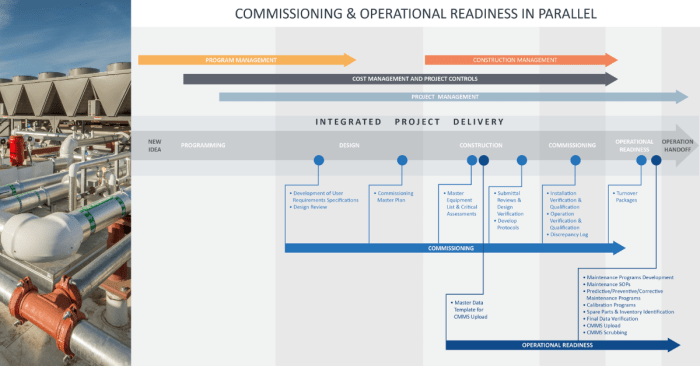
Over-the-air repair readiness is swiftly changing the landscape of the automotive industry, bringing innovation and convenience to the forefront of car maintenance. With advancements in technology, manufacturers are now able to deliver essential updates and repairs directly to vehicles without the need for a physical visit to the service center.
This seamless integration not only enhances the user experience for car owners but also streamlines processes for manufacturers, making the concept of on-the-go repairs a reality. As we delve deeper, we discover the broader implications of this technology on various aspects of vehicle service and ownership.
Understanding Over-the-Air Repair Readiness
Over-the-air (OTA) repair readiness represents a significant shift in the automotive industry, allowing manufacturers to diagnose and resolve vehicle issues remotely through software updates. This innovative capability not only enhances vehicle performance but also improves the ownership experience for consumers by minimizing the need for physical service visits.The technology advancements driving OTA repair readiness include the proliferation of connected vehicles equipped with robust telematics systems and high-speed internet connectivity.
These vehicles can receive software updates directly from manufacturers, ensuring that they operate with the latest features and fixes. For manufacturers, implementing OTA repair readiness can lead to reduced warranty costs and improved customer satisfaction, while consumers benefit from more reliable vehicles and the convenience of updates delivered directly to their cars.
Technology Advancements Enabling OTA Repairs
Several key technologies enable the seamless integration of OTA repair readiness in modern vehicles:
- Telematics Systems: These systems gather and transmit vehicle data to manufacturers, enabling real-time diagnostics and remote troubleshooting.
- 5G Connectivity: The implementation of 5G networks allows for faster and more reliable data transmission, essential for effective OTA updates.
- Cloud Computing: Cloud infrastructure supports the storage and processing of vast amounts of vehicle data, facilitating efficient software management.
Benefits for Manufacturers and Consumers
The benefits of implementing OTA repair readiness are multi-faceted:
- Cost Efficiency: Manufacturers can reduce costs associated with traditional repairs and service visits.
- Enhanced Customer Experience: Consumers enjoy the convenience of updates without needing to visit a service center.
- Increased Vehicle Longevity: Regular updates can prolong the life of vehicles by ensuring they operate smoothly.
The Role of Automotive Auctions in Repair Readiness
Automotive auctions are increasingly influential in shaping the adoption of OTA repair readiness. As more vehicles equipped with OTA capabilities enter the market, auction platforms are evolving to prioritize these modern vehicles, creating a ripple effect in consumer expectations and preferences.Auction platforms such as Manheim and Copart are leading the charge by offering a wide array of vehicles that feature over-the-air capabilities, making them more attractive to potential buyers.
This trend reflects a growing awareness of the importance of repair readiness among both sellers and buyers in the automotive auction space.
Influence of Auctions on OTA Adoption
The impact of automotive auctions on the adoption of OTA repair readiness can be seen in several ways:
- Increased Demand: As buyers become more aware of the benefits of OTA technologies, the demand for such vehicles rises.
- Marketing Strategies: Auctions are beginning to highlight OTA capabilities in their listings, influencing buyer decisions.
- Value Assessment: Vehicles with OTA readiness are often valued higher, prompting sellers to invest in these features.
Challenges Faced by Buyers
Despite the advantages, buyers face challenges in understanding the repair readiness of auctioned vehicles:
- Transparency Issues: Not all auction platforms provide detailed information about the OTA capabilities of vehicles, leading to uncertainty.
- Technical Knowledge: Buyers may lack the technical knowledge needed to assess whether a vehicle’s OTA features are functional.
- Market Variability: The fast-paced nature of technology means that what is cutting-edge today may become obsolete quickly.
Implications for Car Detailing and Customization
Over-the-air repair readiness is transforming car detailing and customization services by enabling more precise and dynamic enhancements tailored to individual consumer preferences. This shift in focus from mechanical fixes to software enhancements allows detailing services to incorporate advanced technologies that elevate the overall vehicle experience.Integrating OTA technology into customized vehicles creates new avenues for personalization. Customizers can utilize remote updates to enhance audio systems, navigation, and other in-car technologies, providing customers with a continually evolving vehicle experience.
Impact on Car Detailing
The implications for car detailing include:
- Enhanced Service Offerings: Custom detailers can provide software-driven enhancements alongside traditional services.
- Remote Diagnostics: Detailing businesses can leverage OTA capabilities to diagnose vehicle issues before offering services.
- Continuous Improvement: Regular OTA updates can maintain and improve the quality of detailing services over time.
Methods to Integrate OTA Technology
Customizing vehicles with OTA technology can be achieved through:
- Compatible Hardware: Installing audio and visual systems that support OTA updates to ensure seamless integration.
- Software Solutions: Utilizing software platforms that allow for ongoing updates and feature enhancements.
- Partnerships: Collaborating with technology providers to stay ahead of the latest OTA trends.
Classic Cars and Over-the-Air Technologies
The application of over-the-air repair readiness to classic cars presents unique challenges and opportunities. Retrofitting classic vehicles with modern technology can enhance their functionality and appeal, attracting a new generation of enthusiasts while preserving their iconic designs.Companies like Charge Cars and EV West are at the forefront of retrofitting classic cars for modern repair readiness, incorporating electric drivetrains and connectivity features that allow for OTA updates.
This innovation not only breathes new life into classic vehicles but also opens up a potential market for collectors and enthusiasts.
Feasibility and Challenges
The feasibility of applying OTA technologies to classic cars involves:
- Technical Limitations: Retrofitting older models may be complicated by their original designs and technology.
- Regulatory Hurdles: Compliance with modern safety and emissions standards can present challenges.
- Market Demand: Assessing consumer interest in retrofitted classic vehicles is essential for business viability.
Potential Market for Classic Cars with OTA Capabilities
The market potential for classic cars enhanced with OTA capabilities is promising:
- Collector Appeal: Enthusiasts may be drawn to the combination of classic aesthetics with modern functionality.
- Investment Value: Vehicles that can receive updates may retain value better than their purely classic counterparts.
- Innovation in Restoration: The restoration business may thrive as more collectors seek modern upgrades.
Hybrid and Energy-Efficient Vehicles
Hybrid and energy-efficient vehicles stand to benefit significantly from over-the-air repair readiness. These vehicles often rely on software to optimize performance, making remote updates a valuable feature for both manufacturers and consumers.Several hybrid models have successfully integrated OTA repair technology, enhancing their efficiency and user experience. Brands like Tesla and Toyota have demonstrated that regular software updates can improve battery management systems and overall vehicle performance.
Benefits of OTA Readiness for Hybrids
The advantages of OTA repair readiness for hybrid and energy-efficient vehicles include:
- Improved Efficiency: Regular updates can lead to better fuel economy and reduced emissions.
- Enhanced User Experience: Owners can enjoy the latest features and functionalities without needing to visit a dealership.
- Maintenance Simplification: Manufacturers can address software-related issues remotely, reducing the need for physical repairs.
Future Trends in OTA Repair Readiness

Looking ahead, the trends in OTA repair readiness for hybrid and energy-efficient vehicles are promising:
- Increased Adoption: More manufacturers are expected to embrace OTA technology as consumer demand grows.
- Enhanced Data Utilization: The use of big data analytics will inform future updates tailored to driving habits and performance.
- Greater Integration: Combining OTA capabilities with other technologies, such as autonomous driving systems, will create a more cohesive automotive experience.
Mobile Audio and Video Integration
Mobile audio and video systems are critical components of modern vehicles, and their integration with over-the-air repair readiness enhances functionality and user satisfaction. As vehicles become more connected, the ability to receive updates for audio-visual components ensures that consumers always have access to the latest features.For seamless updates, vehicle owners should consider several factors when choosing audio and video systems.
These include compatibility with OTA technologies, ease of use, and the reputation of the manufacturer for providing timely updates.
Importance of Mobile Audio and Video Systems
The significance of mobile audio and video systems in relation to OTA repair readiness lies in their potential to elevate the in-car experience:
- Entertainment Value: OTA updates can introduce new features and enhancements for entertainment systems.
- Safety Features: Updates can also enhance safety features, such as navigation and collision avoidance systems.
- User Personalization: Consumers can expect more personalized experiences through regular software updates.
Guide for Seamless Updates
To ensure seamless updates for audio-visual components in vehicles:
- Choose Compatible Systems: Opt for systems that are explicitly designed to support OTA updates.
- Regularly Check for Updates: Stay informed about available updates from manufacturers to maximize system performance.
- Consult Professionals: Work with certified technicians for installation and troubleshooting to maintain compatibility.
The Impact of Over-the-Air Repair on Automotive Repairs
The advent of over-the-air repair readiness is revolutionizing traditional automotive repair practices. With the capability to update software remotely, many issues that previously required a physical visit can now be resolved digitally, saving time and reducing inconvenience for consumers.Technicians must adapt to this new landscape by acquiring skills related to software diagnostics and remote troubleshooting, ensuring that they remain competitive in an evolving industry.
Transformation of Traditional Repair Practices
The transformation of automotive repair due to OTA updates encompasses several factors:
- Efficiency Gains: Many repairs can now be resolved without waiting for parts or scheduling appointments.
- Reduced Downtime: Vehicle owners spend less time without their vehicles due to faster problem resolution.
- Broader Skill Sets: Technicians are increasingly required to possess both mechanical and software expertise.
Skills Required for Technicians
As the industry adapts to OTA repair methods, technicians will need to develop specific skills:
- Software Proficiency: Understanding vehicle software systems is critical for diagnosing issues.
- Telematics Knowledge: Familiarity with telematics systems will be essential for remote diagnostics.
- Continuous Learning: Technicians must remain updated on the latest technologies and repair methods.
Cost Savings for Consumers
The potential cost savings for consumers utilizing OTA repairs are significant:
- Lower Repair Costs: Remote diagnostics can reduce the costs associated with traditional repairs.
- Fewer Visits to Service Centers: The ability to resolve issues without physical visits saves time and money.
- Enhanced Vehicle Longevity: Regular updates can help maintain vehicle health, reducing long-term repair expenses.
Over-the-Air Repair Readiness for Different Vehicle Types
Over-the-air repair readiness varies across different vehicle categories, such as SUVs, trucks, vans, and motorcycles. Each category presents unique opportunities and challenges in implementing OTA technologies, emphasizing the need for manufacturers to tailor their strategies accordingly.A detailed analysis of the most advanced vehicles within each category regarding repair readiness showcases the differing expectations and demands of consumers based on vehicle types.
Comparison Across Vehicle Categories
The comparison of OTA repair readiness across vehicle categories reveals distinct trends:
| Vehicle Type | Advanced Features | Consumer Expectations |
|---|---|---|
| SUVs | Remote diagnostics, enhanced infotainment | High demand for connectivity and family features |
| Trucks | Fleet management tools, performance updates | Focus on durability and efficiency |
| Vans | Passenger comfort upgrades, navigation enhancements | Expectations for family-friendly technologies |
| Motorcycles | Performance tuning, safety features | Interest in customization and performance |
Consumer Expectations by Vehicle Type
Variations in consumer expectations for over-the-air capabilities based on vehicle type include:
- SUV Owners: Typically seek advanced safety and entertainment features, expecting regular updates.
- Truck Drivers: Focus on performance and reliability, valuing updates that enhance functionality.
- Van Families: Look for convenience features and entertainment options, expecting seamless connectivity.
- Motorcycle Enthusiasts: Want performance upgrades and customization options, with a keen interest in software enhancements.
Conclusive Thoughts
In summary, over-the-air repair readiness stands as a beacon of progress in the automotive realm, offering significant benefits to both consumers and manufacturers alike. As the industry continues to evolve, the ability to conduct repairs and updates remotely will likely become the standard, paving the way for a new era of automotive technology that enhances vehicle performance and consumer satisfaction.
Questions Often Asked
What is over-the-air repair readiness?
It refers to the ability to perform repairs and updates on vehicles remotely without needing a physical service visit.
How does it benefit consumers?
Consumers enjoy convenience, reduced downtime, and potential cost savings from remote repairs and updates.
What types of vehicles can utilize over-the-air repair readiness?
Most modern vehicles, including hybrids and electric cars, are equipped to take advantage of this technology.
Are classic cars compatible with over-the-air repair readiness?
While challenging, some companies are retrofitting classic cars to incorporate this technology.
How does over-the-air readiness affect traditional repair shops?
It may require them to adapt and train technicians on new technologies, potentially transforming their service offerings.






